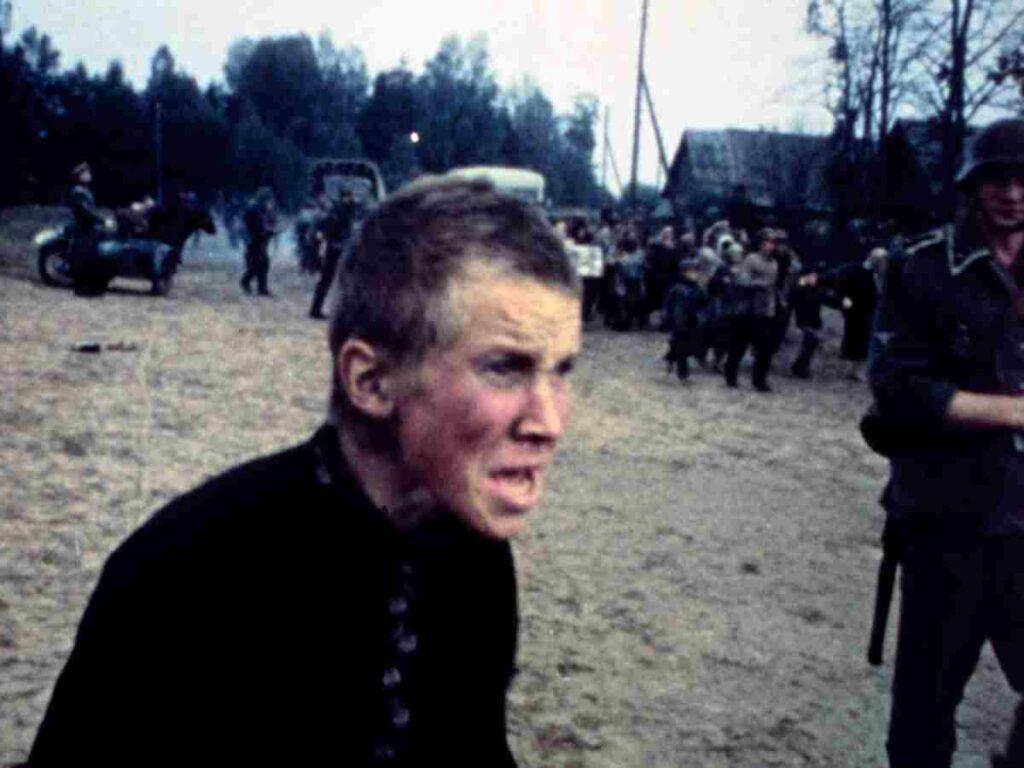Script-writing is a laborious process that demands an extreme amount of discipline. There are millions of ideas running through your head and it can be hard to put them all down on paper. This is where a film treatment comes in handy. A film treatment helps to organize your thoughts and streamline them before starting work on the actual script.
With this in mind, this article will walk you through how to write a film treatment. We’ll add in a couple of examples to make it easier for you to write your own.
What is a film treatment?
A film treatment is a written document that contains all the important details of a feature film, TV show or any project. It includes a description of all the important plot points and a short account of the characters. A film treatment should read almost like a short story and is almost always written in the present tense.
There isn’t a predetermined page count for a film treatment. The length of the document can vary from one project to another depending on its complexity. But, production companies typically expect a film treatment to be under 20 pages.
Why do you need a film treatment?
There are various uses to writing your own film treatment before starting work on a script. Some of them are:
- A reference for the screenwriters which will act as the guiding light for when they start to explore individual narrative threads
- A concise summary to be shared with other members of the team or agents to gauge interest from various production companies that they would be pitching to before the complete script can be written
- A comprehensive guide of a finished script that effectively highlights the major sequences of the project
- A detailed description of the story and structure so that screenwriters have something to go back to when making changes and writing successive drafts
Elements of a film treatment
There are no fixed rules when it comes to the components that should or should not be included in a film treatment. But, in general it comprises of the following elements:
- Title of the film
- Name(s) of the screenwriter(s)
- Logline: Provides information about the setting of the movie and its characters in less than 50 words
- Theme: The central concept of the film. Examples include love, good vs evil, the prodigal son, survival, etc
- A short summary of all the three acts of the film – setup, confrontation and resolution
- A concise description of all the plot points and the characters
Components that are best left out:
A film treatment needs to be short and should get its point across using the least amount of words. To achieve this, avoid using:
- Expository dialogue
- Images or illustrations
- Wordy paragraphs
- Distracting fonts (the standard 12-point Courier font is recommended)
How are spec scripts and film treatment different from each other?
Though a spec script and a film treatment are written before the screenplay, there are a few vital differences between the two. A film treatment solely exists to summarize the central conflict and the major plot points and hence is a shorter document. Meanwhile, a spec script is much more detailed and generally tends to be longer. It’s also written in the format of a screenplay as opposed to the prose format of a film treatment.
What’s a scriptment?
Yet another term that you might have come across while reading about screenplay writing is a scriptment. This is a combination of a film treatment and a screenplay. A scriptment incorporates the screenplay format and prose to create a more engrossing read. The term is attributed to ace director James Cameron who’s always used this format for most of his previous projects.
Scriptments in addition to narrating the story from beginning to end also include scene headings and dialogue. All of this adds to the length of the document, making a scriptment longer than the average film treatment. But, it’s important to remember that scriptment is not a screenplay. Character names and dialogues are meant to be used sparingly, only to accentuate the major moments of the story.
Film Treatment Examples
Since film treatments constitute the prewriting phase of the screenwriting process, it can be tricky to find examples online. With this in mind, we’ve compiled a list of must-read film treatments for future screenwriters to study and use to create their own.
Battle for the Planet of the Apes: Written by Paul Dehn of ‘Goldfinger’ fame, his film treatment became the basis for James Carrington and Joyce Carrington’s script.
ET: The Extra-Terrestrial: Written by Steven Spielberg and Melissa Matheson, this film treatment is a good place to start for any budding screenwriter.
Godzilla: This film treatment is known for having separate headings for different locations, making the plot seem easier to process. It was originally written by Ted Elliott and Terry Rossio.
Mr. and Mrs. Smith: Simon Kindberg’s film treatment does a great job introducing its unique characters and the core conflict of the film.
The Shining: Stanley Kubrick offers a masterclass in writing horror
Sinbad: This one-of-a-kind treatment didn’t get made into a movie, but still merits a mention for breaking up the format into smaller subheadings like Concept, Theme, Characters, and Synopsis. This meant one could pick up the document and go through only the parts that interest them.
Strange Days: This one isn’t strictly a film treatment, but rather one of James Cameron’s attempts at revolutionizing the screenwriting space with a unique format called a scriptment. Like we’ve elucidated before, a scriptment is a hybrid of a film treatment and a screenplay.
How to write a film treatment?
While different script writers rely on different styles, here are a few general steps that most of them can vouch for.
1. Begin with the title
A title should capture the spirit of the movie. It’s after all the first thing that a producer or an executive may read. The impression they form rests solely on the title. A good title encompasses the essence of the story and speaks to the reader about the sensibilities of the writer. Titles that fit this bill perfectly are The Truman Show, Jaws, The Good, the Bad, and the Ugly among others.
Another approach is to base your title on the main characters. Think of titles like Atomic Blonde, The Disaster Artist, or The Guardians of the Galaxy. They perfectly encapsulate the personality of the characters, making us want to know more about them. Many filmmakers name their screenplay after a prominent location from the film. Chinatown, Sleepless in Seattle, and Dunkirk are some popular examples.
2. Write down a logline
In simple terms, a logline is a one-sentence summary of your movie. It needs to be short, sharp, and interesting enough to entice someone to read your entire script. A good logline must include a description of the main character, antagonist, inciting incident, and central conflict. After you put them all together, it should read something like this:
When an inciting incident happens, the main character decides to central conflict against the antagonist.
An ideal length most screenwriters stick to is around 30 words. Anything beyond 35 words might read like a synopsis, defeating the very idea of a logline.
Tips to writing a great logline:
1. Write a logline, not a synopsis: Remember you’re not explaining every event in your story. A logline only functions to give a reader an idea of what to expect.
2. Sell your main character: Use adjectives to describe your main character. Examples – A prodigious musician, a meritorious academic, a hardened criminal. Try to avoid using the names of the characters, it offers no new information to the reader.
3. Jot down the intentions of your character: Your story is naturally defined by the actions of the main character. So, a logline should highlight the goals of the character and get a reader thinking about the lengths your character might go to in order to achieve those objectives.
4. Raise the stakes: High-stake situations are sure to grab the attention of the reader by the eyeballs. A threat lurking in the background, an impending sense of doom – all of these statements are designed to hook the reader and keep them interested in the story you’re narrating.
Examples of loglines
Let’s look at how feature films use the above-mentioned rules to come up with effective loglines.
1. Back to the Future: A young man is transported to the past, where he must reunite his parents before he and his future ceases to exist
2. Finding Nemo: When his son is swept out to sea, an anxious clownfish embarks on a perilous journey across a treacherous ocean to bring him back
3. The Godfather: The aging patriarch of an organized crime dynasty transfers control of his clandestine empire to his reluctant hero
4. The Matrix: A computer hacker learns from his mysterious rebels about the true nature of his reality and his role in the war against its controllers
5. Pulp Fiction: The lives of two mob hitmen, a boxer, a gangster’s wife, and a pair of diner bandits intertwine in four tales of violence and redemption
6. The Shawshank Redemption: Two imprisoned men bond over a number of years, finding solace and eventual redemption through acts of common decency.
3. Expand on the concept
This is where you would delve deeper into the ideas that you’d planted in the logline.
Expand on the theme of the film and work on constructing a suitable tone for the same. You can also affix any inspirations and shed more light on how the central concept was conceived.
4. Flesh out your characters
Once the setting of the film has been established, the next step is to start working on the characters. Think of the number of characters you might need and how you could go about developing them. Try to have proper character arcs in place. This will make the characters seem more relatable as their actions begin to have an emotional impact on the viewer.
Tips to constructing a believable character:
1. Define the motivations of your character: The wants and needs of a character need to be grounded in reality. A character becomes a fully realized human being when there’s clear reasoning behind their actions. The decisions taken by a character should be dictated by their circumstances.
2. Establish the central conflict: This could either be internal or external. So, determine your character’s main conflict and construct character arcs around it.
3. Figure out how your character will change with time: Dynamic characters are more likely to connect with viewers as opposed to static characters. So, think of how your character is going to grow over the course of the movie.
4. Develop a suitable backstory: Developing a backstory is a crucial part of character development. It adds more weight to the actions of a character and makes them seem more authentic.
5. Work on their superficial characteristics: The last step is to figure out the superficial characteristics of your character. Think of how your character should look, their body language, etc. Idiosyncrasies can also make your character stand out and leave a lasting impression on the general public.
5. Write down the story
Now that the characters have been fleshed out, it’s time to start working on the actual story. Break the plot into three acts and think of how each plot point fits into the larger narrative. Think of the chronology of events and take a step back to identify if the order makes sense.
The elements of a three-act structure:
Act one: This should ideally establish the world that the character inhabits. It concludes with an inciting incident that acts as the turning point in the life of the protagonist. Let’s consider the example of a story of a homicide detective to understand the three-act structure better. The first act introduces us to him and gives us a glimpse of his domestic life. It ends with a chilling murder of someone close to him, let’s say his partner at work.
Act two: This raises the stakes of the protagonist’s journey, exposing the imminent danger that awaits. It ends with another turning point, making it seem that the main character might fail. Returning to our story, the second act would follow the detective trying to figure out a clue to track the mysterious killer. He finds some trace evidence leading him to a suspect. It ends with a close encounter as the cop narrowly escapes from the clutches of the killer.
Act three: Further divided into two parts – a pre-climax and a climax. A pre-climax consists of the events that lead up to the conclusion of the story. After a climactic confrontation, our protagonist gets back to their normal life. Our story would now depict the honest cop trying to figure out the whereabouts of the cold-blooded murderer. It eventually leads to a confrontation between the two, as one emerges victorious.
6. Epilogue
These last few lines function to wrap up all the individual threads in the film. This is the time to start thinking about a satisfying ending that successfully ties up all the loose ends of the film. Ensure that proper narrative arcs are in place for all the characters. If you’re thinking of extending the story, then tease the idea of a sequel.




